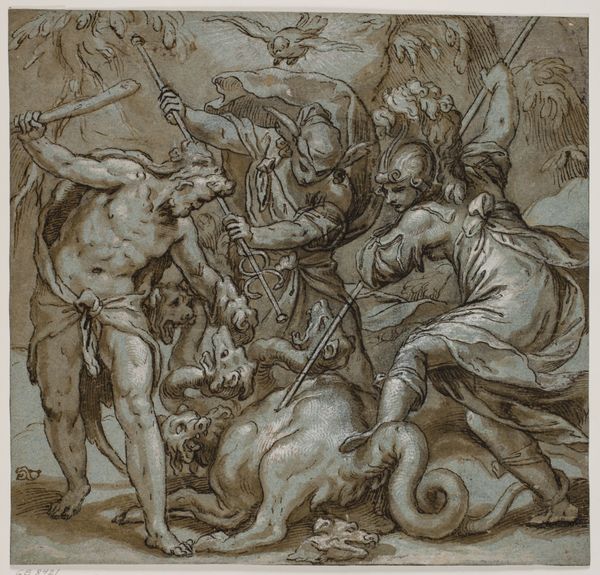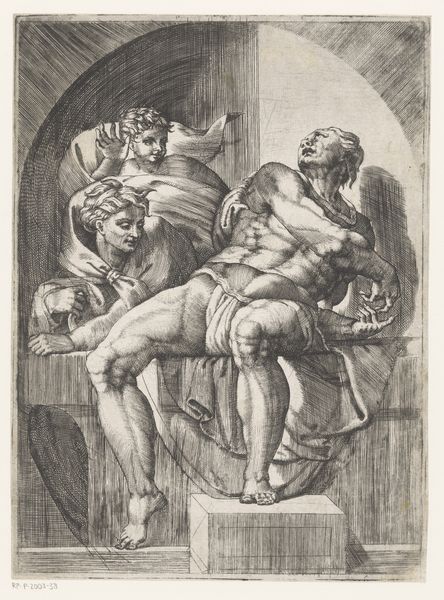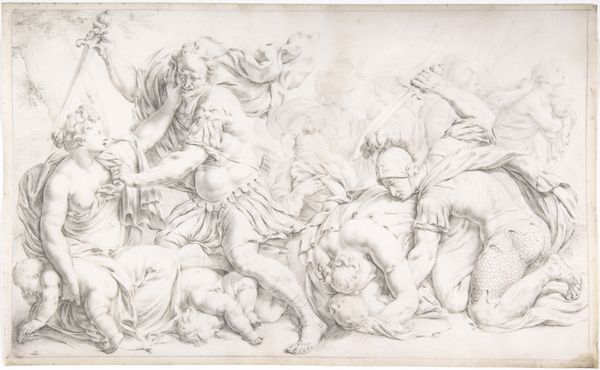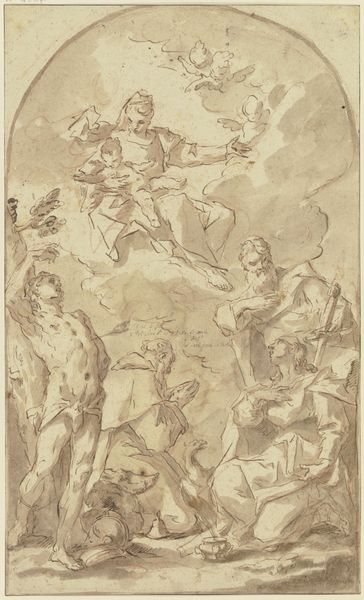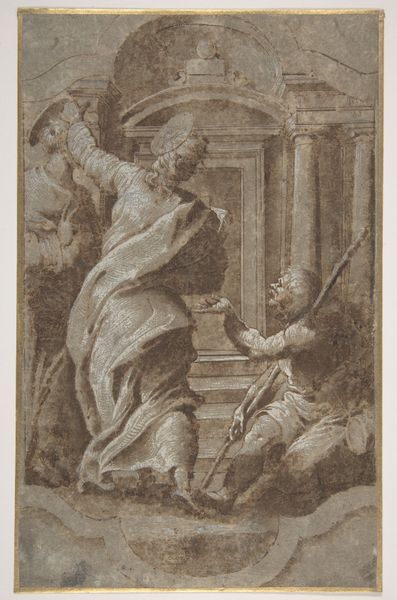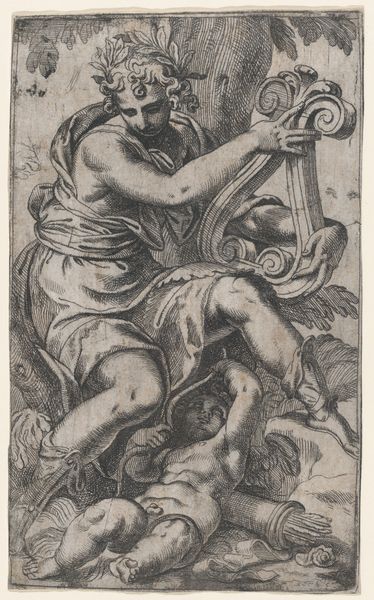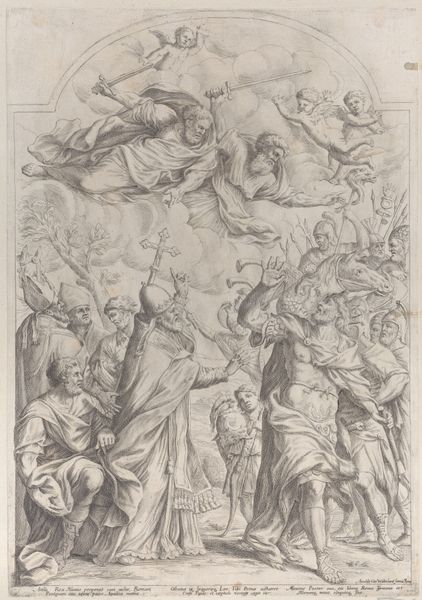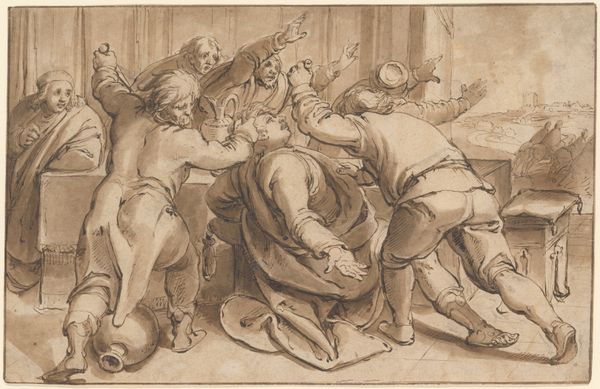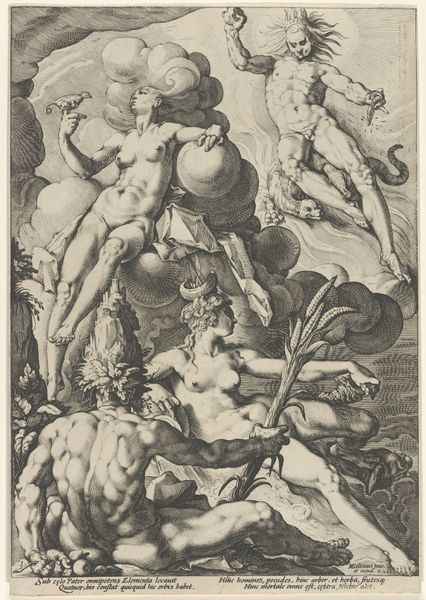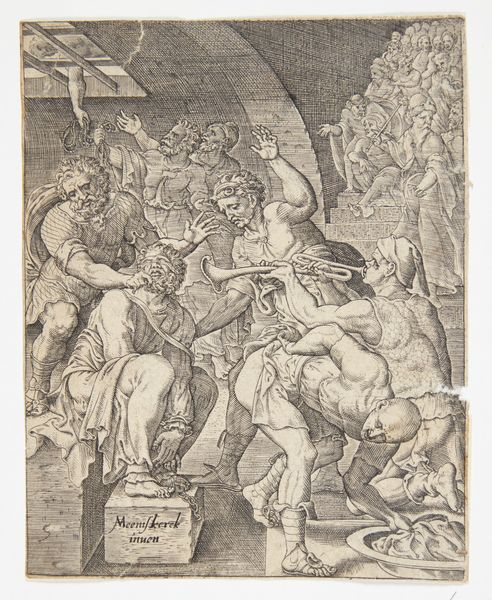
drawing, paper, watercolor, ink
#
drawing
#
baroque
#
figuration
#
paper
#
watercolor
#
ink
#
watercolour illustration
#
genre-painting
Dimensions: height 162 mm, width 184 mm
Copyright: Rijks Museum: Open Domain
Curator: The drawing you are viewing, "Mensen en dieren rond een boom," which translates to "People and animals around a tree," was created by Jan de Bisschop sometime between 1648 and 1671. It combines ink, watercolor, and paper to produce a sepia-toned scene. Editor: My first impression is how sculptural it appears. The brown monochrome lends a carved relief feel despite being lines on paper. It almost feels like a practice study for something monumental, like a frieze. Curator: I agree, there's an interesting tension here. It seems like de Bisschop aims for monumentality with a clear embrace of Baroque figuration – the drama, the figures clustered together. Note also the way he employs symbolic gestures, even the use of particular animal figures that appear, suggesting layers of allegorical meanings within what might appear as mere genre painting. Editor: Speaking of layers, what paper and inks did de Bisschop typically use? The consistent warm tone points towards specific recipes and material sourcing choices from the period. Also, looking closely, one can see subtle gradations within the brown ink that allow for the creation of depth and form. I would love to study his particular technique in more detail, especially with ink-making traditions of the period! Curator: Knowing Bisschop, his process was meticulous. This careful layering could also emphasize a narrative aspect, recalling specific biblical tales or mythological events. What about the figure in the very back in disguise. What stories do these symbols hint at, given the era’s reliance on these sorts of common visual languages? The lion could represent power, the donkey something quite different… Editor: Regardless of subject, it is interesting to think about the production. We need to remind ourselves that images were created by hand in an arduous process using materials produced through other people's labor. That’s one reason why drawings are incredibly special – their tactility makes you that much more closer to its creation, literally produced via manual labor with simple, readily accessible materials of the period. Curator: A tangible relic, certainly. The scene hums with activity—narrative activity, and even spiritual potential – doesn't it? It is so densely packed, there is something very moving, even emotional, to the composition. Editor: I completely agree. Focusing on materiality doesn't diminish this at all; rather, understanding the work through that lens helps to ground it to a particular historical moment, expanding what a drawing, no matter the composition or underlying allegories, can express about labor, process, and consumption.
Comments
No comments
Be the first to comment and join the conversation on the ultimate creative platform.
